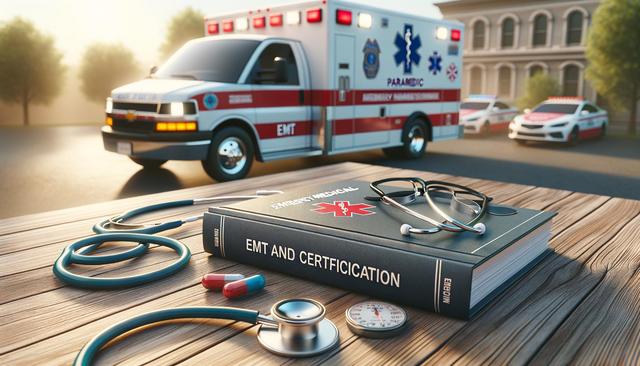Understanding EMT and Paramedic Roles
Emergency Medical Technicians (EMTs) and paramedics are essential members of the healthcare system, providing critical pre-hospital care during medical emergencies. While both roles involve responding to 911 calls and administering emergency aid, the scope of practice varies significantly between the two. EMTs typically handle basic emergency care such as CPR, oxygen administration, and wound treatment. Paramedics, on the other hand, are trained to perform more advanced procedures, including intravenous therapy, drug administration, and cardiac monitoring. Both roles require certification, and understanding these distinctions helps prospective students choose the appropriate training path based on their career goals.
In many regions, aspiring emergency responders begin their journey as EMTs before advancing to paramedic training. This step-by-step approach ensures a solid foundation of knowledge and practical experience. The levels of certification—EMT-Basic, EMT-Intermediate (in some states), and Paramedic—each build on the skills and responsibilities of the previous one. Choosing the right program from the start can make a significant difference in the quality of education and future job opportunities.
Program Structure and Curriculum
EMT and paramedic certification programs are structured to provide both classroom instruction and practical field experience. EMT programs are generally shorter, often lasting between 3 to 6 months, and focus on foundational emergency care skills. Paramedic programs are more intensive, typically taking 12 to 24 months to complete, and include advanced medical training that prepares students for complex emergency scenarios.
The curriculum in these programs covers a wide range of topics, such as:
- Human anatomy and physiology
- Trauma management
- Cardiac and respiratory emergencies
- Medical and legal considerations
- Patient assessment techniques
In addition to classroom learning, hands-on training is a core component. Students participate in lab simulations and clinical rotations in hospitals and on ambulances. These experiences are crucial for developing practical skills and gaining exposure to real-world emergencies.
Admission Requirements and Prerequisites
Admission into EMT and paramedic certification programs requires meeting certain prerequisites. Most EMT programs require a high school diploma or equivalent and the ability to pass a background check. Physical fitness and the ability to handle high-stress situations are also important, as the role can be physically and emotionally demanding.
For paramedic programs, additional requirements often include:
- Current EMT certification
- Minimum hours of field experience as an EMT
- CPR certification
- Entrance exam or interview process
Some programs may also require completion of college-level courses in subjects like biology or medical terminology. Meeting these prerequisites ensures that students are adequately prepared for the rigorous training ahead and can handle the responsibilities of advanced patient care.
Certification and Licensure Process
Once the training program is completed, graduates must pass a certification exam to become officially recognized as an EMT or paramedic. In the United States, the National Registry of Emergency Medical Technicians (NREMT) administers these exams. The process includes a cognitive test that evaluates knowledge of emergency care concepts and a psychomotor test that assesses hands-on skills.
After passing the exams, candidates apply for state licensure, which may involve additional background checks or state-specific exams. Many states require continuing education credits for license renewal, ensuring that EMTs and paramedics stay current on medical practices and protocols.
Maintaining certification is crucial for career advancement and job security. Some professionals choose to pursue further specializations, such as critical care paramedic or flight medic, which require additional training and experience.
Career Opportunities and Advancement
Certified EMTs and paramedics have a wide range of employment opportunities. They can work for public ambulance services, private emergency response companies, fire departments, hospitals, or even in remote or industrial settings. The demand for skilled emergency responders remains steady, particularly in rural and underserved areas.
With experience, EMTs can advance their careers by pursuing paramedic training, moving into supervisory roles, or specializing in areas like tactical EMS or disaster response. Some may also continue their education to become nurses, physician assistants, or emergency room technicians. Career advancement often depends on a combination of experience, additional certifications, and a commitment to lifelong learning.
Benefits of a career in emergency medical services include:
- Meaningful, impactful work
- Opportunities for advancement
- Varied and dynamic work environments
- Strong sense of community and teamwork
For those with a passion for helping others and the ability to thrive in high-pressure situations, this career path offers both personal and professional fulfillment.
Conclusion: Choosing the Right Path in Emergency Medical Services
EMT and paramedic certification programs provide the essential training needed to begin a rewarding career in emergency medical services. Understanding the differences between EMT and paramedic roles, the program structure, and the certification process helps prospective students make informed decisions. With a blend of classroom instruction and hands-on experience, these programs prepare individuals to respond effectively in emergency situations and make a real difference in their communities. Whether you’re just starting out or looking to advance your existing skills, pursuing certification is a valuable step toward becoming a trusted and capable emergency responder.




Leave a Reply